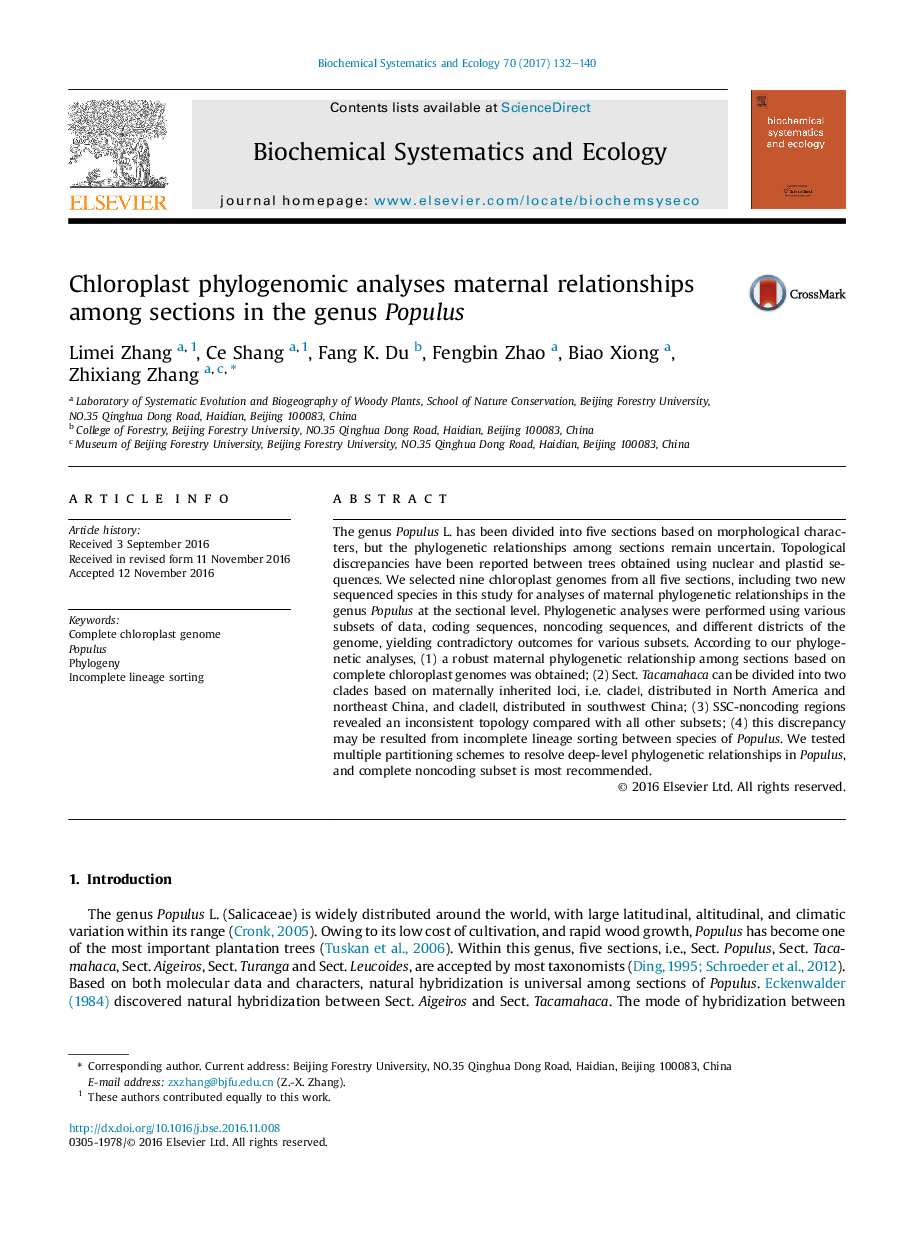| Article ID | Journal | Published Year | Pages | File Type |
|---|---|---|---|---|
| 5154973 | Biochemical Systematics and Ecology | 2017 | 9 Pages |
Abstract
The genus Populus L. has been divided into five sections based on morphological characters, but the phylogenetic relationships among sections remain uncertain. Topological discrepancies have been reported between trees obtained using nuclear and plastid sequences. We selected nine chloroplast genomes from all five sections, including two new sequenced species in this study for analyses of maternal phylogenetic relationships in the genus Populus at the sectional level. Phylogenetic analyses were performed using various subsets of data, coding sequences, noncoding sequences, and different districts of the genome, yielding contradictory outcomes for various subsets. According to our phylogenetic analyses, (1) a robust maternal phylogenetic relationship among sections based on complete chloroplast genomes was obtained; (2) Sect. Tacamahaca can be divided into two clades based on maternally inherited loci, i.e. cladeâ
, distributed in North America and northeast China, and cladeâ
¡, distributed in southwest China; (3) SSC-noncoding regions revealed an inconsistent topology compared with all other subsets; (4) this discrepancy may be resulted from incomplete lineage sorting between species of Populus. We tested multiple partitioning schemes to resolve deep-level phylogenetic relationships in Populus, and complete noncoding subset is most recommended.
Related Topics
Physical Sciences and Engineering
Chemistry
Organic Chemistry
Authors
Limei Zhang, Ce Shang, Fang K. Du, Fengbin Zhao, Biao Xiong, Zhixiang Zhang,
